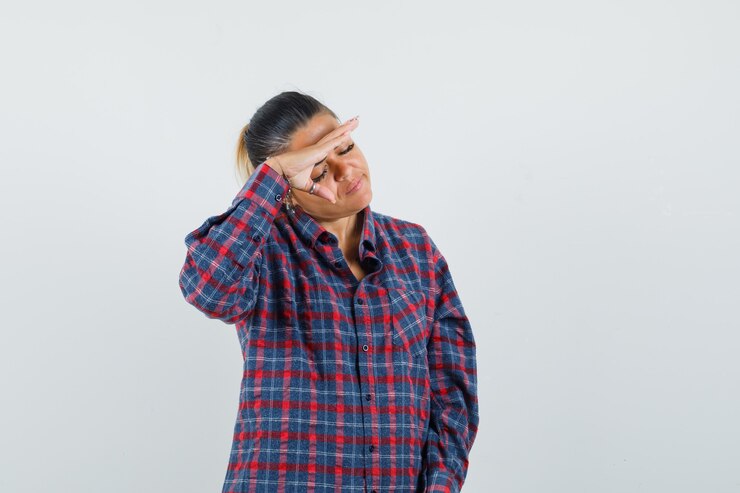Lazy eye, medically known as amblyopia, is a condition where one eye underperforms compared to the other, often due to developmental issues during childhood. While lazy eye is typically associated with children, it can persist into adulthood if untreated. The good news is that advancements in medical science have introduced a range of lazy eye treatment options that cater to both children and adults, offering hope for improved vision.
In this blog, we’ll explore the top 5 effective treatments for lazy eye, their benefits, and the latest updates on this topic.
Understanding Lazy Eye
Lazy eye occurs when the brain favors one eye over the other, leading to weaker visual input from the affected eye. Over time, this lack of use can impair depth perception, coordination, and overall visual clarity. Common causes include:
- Strabismus (misalignment of the eyes)
- Significant differences in refractive errors between the eyes
- Cataracts or other conditions that block vision during infancy
Why Is Treating Lazy Eye Crucial?
Untreated lazy eye can lead to permanent vision loss in the weaker eye. For children, the condition is best addressed early while their vision is still developing. However, recent research indicates that adults, too, can benefit from treatment, thanks to the brain’s neuroplasticity.
Top 5 Effective Lazy Eye Treatments
1. Eye Patching Therapy
Eye patching is one of the oldest and most effective treatments for lazy eye in children. The dominant eye is covered with a patch, forcing the weaker eye to work harder and develop its vision.
Advantages:
- Cost-effective
- Encourages visual improvement in the weaker eye
- Typically recommended for younger children
Limitations:
- Requires consistent use, which can be challenging
- May cause discomfort or social stigma
Latest Updates:
A 2023 study published in the Journal of Pediatric Ophthalmology found that children aged 4–7 who used patches for 4–6 hours daily saw a 70% improvement in their weaker eye’s vision within six months.
2. Vision Therapy
Vision therapy involves a series of exercises and activities designed to improve coordination between the eyes and the brain. This treatment is gaining popularity for both children and adults.
Techniques Used:
- Special computer-based programs
- Interactive games and activities
- Use of tools like prisms and filters
Benefits:
- Improves binocular vision
- Reduces dependency on corrective lenses
- Engages patients through gamified exercises
Latest Updates:
Modern vision therapy software, such as Vivid Vision and NeuroVision, has proven effective for adults. A 2024 meta-analysis showed that over 60% of adult amblyopia patients experienced measurable improvement with virtual reality-based vision therapy.
3. Corrective Lenses (Glasses or Contact Lenses)
For lazy eye caused by refractive errors (anisometropia), corrective lenses are an essential part of the treatment plan. These lenses correct differences in focus, ensuring both eyes receive clear visual input.
Advantages:
- Simple and non-invasive
- Often the first step in lazy eye treatment
- Effective in conjunction with other therapies
Latest Updates:
Combination treatments, such as glasses with atropine drops, have shown promising results. Atropine blurs the vision in the dominant eye, encouraging the weaker eye to work harder. Recent trials in 2023 reported significant success in children aged 3–10 using this method.
4. Surgical Intervention
Surgery is considered when structural issues, such as strabismus or cataracts, contribute to lazy eye. Eye muscle surgery corrects alignment issues, enabling both eyes to work together effectively.
Types of Surgery:
- Strabismus surgery to realign eye muscles
- Cataract removal in young children
Benefits:
- Immediate correction of physical abnormalities
- Enhances the effectiveness of other therapies
Risks:
- Requires a skilled surgeon
- Recovery time can vary
Latest Updates:
As of 2024, robotic-assisted strabismus surgery has gained traction for its precision and reduced recovery times. Reports indicate an 85% success rate in achieving proper eye alignment.
5. Digital Therapeutics and Apps
The digital age has brought innovative lazy eye treatment options to smartphones and tablets. Apps designed for amblyopia treatment combine entertainment with therapy.
Popular Apps:
- AmblyoPlay
- Occlusion Training Apps
- Vivid Vision Home
How They Work:
- Gamified exercises stimulate the weaker eye
- Users engage in fun, vision-improving activities
- Tailored programs adapt to the user’s progress
Latest Updates:
A recent 2024 study revealed that children using digital therapeutic apps for 20 minutes daily experienced an 80% improvement in visual acuity after three months.
Tips for Parents and Adults
- Early Diagnosis: Schedule regular eye exams for children, especially if there’s a family history of amblyopia.
- Consistency is Key: Stick to prescribed therapies for better results.
- Consider Neuroplasticity: Adults should not shy away from seeking treatment, as new studies show the brain’s adaptability can help at any age.
- Monitor Progress: Regular follow-ups with an ophthalmologist are crucial to track improvements.
Latest Trends and Events in Lazy Eye Research
- Breakthrough in Gene Therapy (2024): Researchers at Johns Hopkins University are investigating gene therapy to address developmental visual impairments, potentially offering new solutions for lazy eye.
- Global Awareness Initiatives: October 2024 marks World Sight Day, with campaigns focusing on early detection and treatment of amblyopia.
- AI in Diagnosis: Artificial intelligence is being used to detect amblyopia earlier by analyzing subtle eye movement patterns.
Conclusion
Lazy eye treatment has come a long way, with diverse options catering to both children and adults. From traditional methods like eye patching to cutting-edge digital therapeutics, there’s a solution for everyone. The key lies in early detection, consistent treatment, and staying informed about the latest advancements.
If you or your child is dealing with lazy eye, consult an eye specialist to explore these treatments. With the right approach, it’s never too late to achieve better vision.
